Wind and Weather
Artificial Surfing Reefs
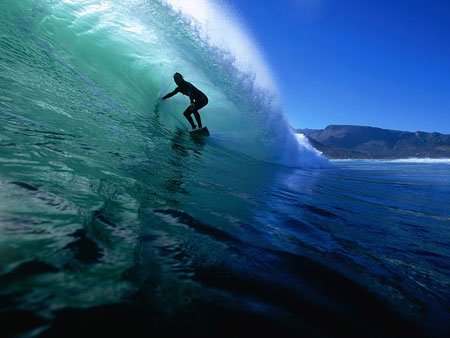 Artificial surfing reefs have been a topic of much speculation because of their perceived ability to eliminate scarcity. The idea is that if we have the ability to create new breaks, we can create more and we can build them perfectly. Imagine what it would be like to have a Bells Beach, Trestles or Pipeline in every city. At this point, that dream is still a long way off as there have been many stumbling blocks in the process. Nonetheless there are groups of oceanographers working and trying new ideas and the next one might just be a breakthrough.
Artificial surfing reefs have been a topic of much speculation because of their perceived ability to eliminate scarcity. The idea is that if we have the ability to create new breaks, we can create more and we can build them perfectly. Imagine what it would be like to have a Bells Beach, Trestles or Pipeline in every city. At this point, that dream is still a long way off as there have been many stumbling blocks in the process. Nonetheless there are groups of oceanographers working and trying new ideas and the next one might just be a breakthrough.
A scientist might call them "submerged surfing topographies." Basically what they mean is the different ocean floors and how they effect the way a wave breaks. While beach breaks tend to be somewhat unpredictable, with many small peaks that shift with the sandbars, reef breaks are very consistent. A wave breaking off a solid rock or coral reef looks very similar today as it did 20, 50 or even hundreds of years ago.
When a wave rolling along encounters a reef, the lower part of the wave's energy drags against the reef and slows down. The top part of the waves energy continues moving at the same speed and that is why it starts tipping forward, eventually breaking. The more dramatic the reef, the faster this process happens. If it is fast enough, the wave will break hollow.
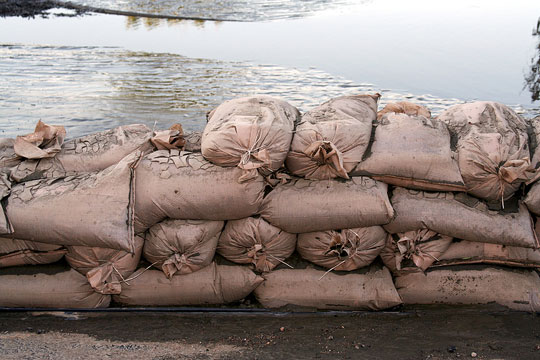 Surfers have known this for years. Around campfires and in crowded lineups they have speculated about making their own reef. Whether it be by piling rocks, dropping bags of dry cement or driving an old VW van out into the ocean at low tide. The inherent problem is that you need something really big to create an artificial reef. Remember, the bottom of the wave has to slow down enough that the top collapses over it. There are also other factors like how the wave tailors, focuses and magnifies the wave. There is much more to it than just dropping rocks and hoping for the best.
Surfers have known this for years. Around campfires and in crowded lineups they have speculated about making their own reef. Whether it be by piling rocks, dropping bags of dry cement or driving an old VW van out into the ocean at low tide. The inherent problem is that you need something really big to create an artificial reef. Remember, the bottom of the wave has to slow down enough that the top collapses over it. There are also other factors like how the wave tailors, focuses and magnifies the wave. There is much more to it than just dropping rocks and hoping for the best.
To get some more info on artificial reefs, SurfScience contacted Andrew Pitt, a surfing reef architect from Australia. His company Surfing Ramps, does consulting and design work for artificial reefs. A student of artificial reef projects, Andrew filled us in on what has been attempted and why some efforts had better results than others.
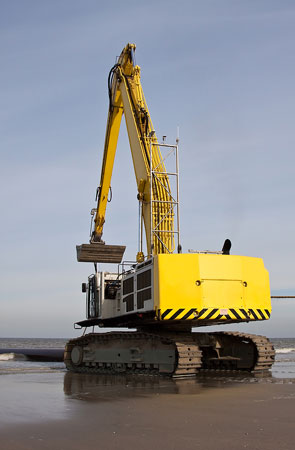 SurfScience: In your opinion will artificial surfing reef creation and reef modification become more prevalent in the next 20-30 years?
SurfScience: In your opinion will artificial surfing reef creation and reef modification become more prevalent in the next 20-30 years?
Andrew Pitt: Yes, for two reasons.
a) As world affluence increases, so too does the spending on recreational infrastructure – more new sporting fields, more boat ramps, better skate parks, fresh tennis courts and safer playgrounds.
b) Climate change means modal swell direction will vary and higher tides – these changes will impact the location and look of our coastlines. When threatened, human response will be flight, as in retreat, or fight, as in put up storm barriers, like submerged offshore reefs. Local communities will demand these reefs serve several functions – including coastal protection, surfing and fishing.
SS: What are the biggest sources of encouragement that we are moving in that direction?
AP: Local boardriding clubs are inspiring. They are the hub of a local surfing community, multi-generational and representative of local surfers aspirations. I often see these clubs acting as guardians of their local surfing spots, managing them, protecting them, yet also driving the demand for more and better surfing spots in their area.
SS: What is the scale of the construction of an artificial reef as compared to a jetty, sea wall or pier? How big does a reef need to be to bring actual results?
The scale of a surfing reef is linked to consistency, as in how many surfable days per year. My research suggests a reef the size of a tennis court, may provide epic waves sometimes, but not under a broad range of wave heights and climatic conditions. But say, with modal wave height of knee to head high, a reef the scale of a football field is ideal for a large number of surfable days per year. 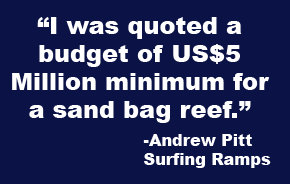 SS: What is a ballpark cost range for a reef to be created? $10k, $100k, $1Million?
SS: What is a ballpark cost range for a reef to be created? $10k, $100k, $1Million?
Reef renovations are the most cost effective option. For example, incipient surfing spots that are almost surfable, but need the removal of a hazardous ledge or for a deep hole to be filled in between two sections of reef. Boulder reef remodelling work completed in Bundaberg Australia cost under US$10,000, yet managed to remove hazards, smooth the wave breaking face and provide an increase in surfable days per year. Meanwhile I was quoted a budget of US$5million minimum for a sand bag reef. To re-create Grajagan, by inducing coral growth, say upwards of US$200million.
SS: Taking a look at where we have come from, is there anyone that has influenced you and the way you think about the ocean floor?
AP: Kimo Walker studied the seafloor topography of Hawaiian surfing reefs, places like Sunset, Waimea Bay, Pipeline, Makaha and Queens. He developed a descriptive terminology still used today. A great man: a pioneer, honorable, ethical, supportive, humble yet proud, knowledgeable, caring, sharing in an Aloha way... he was an inspiration, a mentor and a true gentleman. Sadly, he passed away in 1998. Mr Walkers style of research, as in the close study and analysis of natural surf spot topography, is rarely seen, yet so essential.
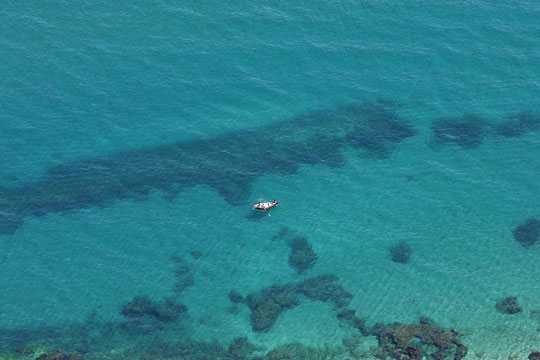 SS: It seems a large factor people ignore is how a reef has to first amplify the wave before it breaks in order to get a good surfing section. How is this achieved?
SS: It seems a large factor people ignore is how a reef has to first amplify the wave before it breaks in order to get a good surfing section. How is this achieved?
A simple analogy is the antenna on a radio, the taller the antenna the stronger the radio signal. When you point the antenna to the radio wave source you get more signal. Its a similar concept in surfing reefs, a spot with a submerged ridge extending seaward far beyond the wave breaking zone will suck in all available swell, wave amplification, we call these spots ‘swell magnets’. My research indicates 26 popular beachbreaks on Australia’s east coast have a deepwater reef offshore, we call them bomboras, that act as swell magnets and induce beachbreak peaks, rather than beachbreak closeouts.
SS: What type of spot would you classify as an ideal candidate for a surfing reef to be built?
The ideal location is where the local community is supportive of change. Bundaberg, Australia has a small wave climate, high tidal range and boulder field reefs. I am working to a local coastal committee on a proposal to regrade and remodel a boulder field headland, with all natural on site materials. The concept is to work at low tide, surf the reef at high tide. The cost is low (under US$250,000) and the environmental impact minimal.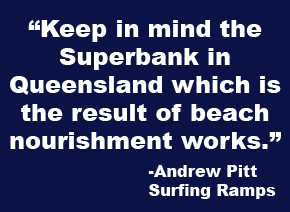 Another ideal candidate is to work-in with a beach renourishment project. At Cronulla in Sydney, the navigation channels of a river are dredged and the sand is dumped offshore a popular surfing beach. My proposal calls for the carefull placement of the dredged sand, to create an offshore sand bank, with the radio antenna analogy in mind. There are strengths and weakness to the proposal. The sand bank is temporary and will wash away with wave action, but the extra cost is zero $$ and there are more community benefits from the public spend.
Another ideal candidate is to work-in with a beach renourishment project. At Cronulla in Sydney, the navigation channels of a river are dredged and the sand is dumped offshore a popular surfing beach. My proposal calls for the carefull placement of the dredged sand, to create an offshore sand bank, with the radio antenna analogy in mind. There are strengths and weakness to the proposal. The sand bank is temporary and will wash away with wave action, but the extra cost is zero $$ and there are more community benefits from the public spend.
Beach nourishment seems to work in New Jersey, who also tried to improve their waves and keep in mind the Superbank in Queensland which is the result of beach nourishment works.
Conclusion
Artificial surfing reefs aren't a new concept but the idea has come a long way in the past decade. With groups like ASR Limited and conferences like the International Artificial Surfing Reef Symposium, it is obvious that there is momentum growing. Even with the combined knowledge of ocean floor experts, building a reef that will create a surfable wave isn't easy. There are many factors to take into account such as how the reef accounts for swell direction, local conditions and year round wave resources. Then there is the cost which can be in the $1-10 Million rage. For now the experts will keep researching and testing ideas, practicing on smaller scale modification and maintenance projects but within our lifetimes we are going to see this idea come to prevalence. It won't be long before local surfing groups are rallying to raise money for a reef, petitioning to get projects on city ballots and maybe even surfing a world class break just outside your local beach break.



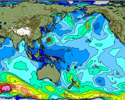
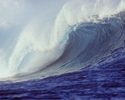
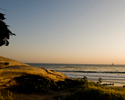
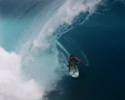
6 Comments